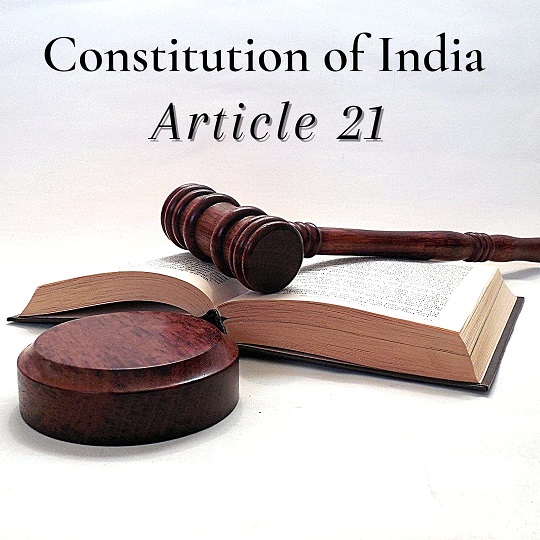ABSTRACT
The judiciary in India has been instrumental in developing the legal framework that governs maritime activities, ensuring adherence to domestic regulations and international treaties. Given India’s vast coastline and important maritime interests, the judiciary’s interpretation of maritime law is essential in resolving issues which are related to admiralty jurisdiction, ship seizures, environmental conservation, and international commitments under agreements such as the United Nations Convention on the Law of the Sea (UNCLOS). This paper analyses significant judicial rulings, the progression of maritime legislation, and the judiciary’s function in harmonising national priorities with global naval standards. It emphasises the proactive approach of Indian courts in updating admiralty law and addressing intricate naval disputes.
1. INTRODUCTION
With a coastline stretching around 7,500 kilometres and a heavy reliance on maritime commerce, India necessitates a strong legal framework to oversee maritime activities. Indian maritime law includes aspects such as admiralty jurisdiction, merchant shipping, marine pollution, and the implementation of international conventions. The judiciary in India, especially the Supreme Court and High Courts, has played a crucial role in interpreting and developing this legal framework. Through significant rulings, the judiciary has clarified uncertainties in maritime laws, broadened the scope of admiralty jurisdiction, and ensured compliance with international maritime standards. This paper examines the judiciary’s role in interpreting maritime law, particularly its contributions to dispute resolution, legislative modernisation, and the maintenance of India’s commitments under international law.
2. HISTORICAL CONTEXT OF MARITIME LAW IN INDIA
Maritime law in India has its roots in legislation from the colonial period, such as the Coasting Vessels Act of 1838, the Indian Registration of Ships Act of 1841, and the Indian Ports Act of 1908. These regulations were enforced by the High Courts of Bombay, Madras, and Calcutta under the Colonial Courts of Admiralty Act of 1890, concentrating on ship registration, port operations, and admiralty jurisdiction. After gaining independence, the Merchant Shipping Act of 1958 brought together various maritime regulations, while the Admiralty Act of 2017 updated the laws regarding admiralty. The judiciary has played a crucial role in interpreting these laws to tackle modern challenges such as marine pollution, piracy, and international disputes.
3. KEY JUDICIAL CONTRIBUTIONS TO MARITIME LAW
The Indian judiciary has influenced maritime law through its decisions related to admiralty jurisdiction, ship arrests, environmental protection, and adherence to international conventions. Below are in-depth analyses of its contributions:
3.1. Admiralty Jurisdiction
Admiralty jurisdiction defines the extent of courts’ authority over maritime claims. In the case of M.V. Elisabeth v. Harwan Investment and Trading Pvt. Ltd. (1993), the Supreme Court broadened this jurisdiction by ruling that High Courts can apply in rem jurisdiction over foreign vessels present in Indian waters, irrespective of the shipowner’s nationality. The Court highlighted that admiralty jurisdiction is not restricted by territorial limits, allowing claimants to seek effective remedies. This ruling, which has been referenced in subsequent cases, established a more generous interpretation of jurisdictional boundaries, consistent with global maritime norms.
The Admiralty Act, 2017, further delineated jurisdiction, empowering High Courts to address claims related to vessel ownership, mortgages, and environmental harm. In OSV Bhagwati v. Union of India (2019), the Bombay High Court interpreted the Act to enhance the procedures for ship arrest, ensuring that there is procedural fairness while safeguarding claimants’ interests. The judiciary’s proactive analysis has modernised admiralty law, positioning India as a significant venue for resolving maritime disputes.
3.2. Ship Arrests and Maritime Liens
Maritime claims are secured through ship arrests, and the legal framework surrounding these arrests and liens has been clarified by the judiciary. In the case of M.V. Al Quamar v. Tsavliris Salvage International Ltd. (2000), the Supreme Court laid down the necessary conditions for ship arrests, highlighting the requirement for a valid maritime claim and adequate evidence. The Court also acknowledged maritime liens related to wages, salvage, and damages from collisions, giving them priority over other types of claims. This judgment, cited in later cases, ensured uniformity in the procedures related to arrests.
The Bombay High Court, in Crescent Petroleum Ltd. v. M.V. Monchegorsk (2016), tackled the issue of a vessel’s arrest due to unpaid bunkering services, emphasising that maritime liens apply to essential services as well. The judiciary’s fair approach protects the interests of claimants while averting unwarranted arrests, thereby enhancing trust in India’s maritime legal framework.
3.3. Environmental Protection
Marine pollution is a critical issue in maritime law that has prompted significant judicial action. In Research Foundation for Science v. Union of India (2005), the Supreme Court dealt with the unsafe shipbreaking practices at Alang port, mandating adherence to the Merchant Shipping Act, 1958, and the Basel Convention. The Court invoked the principle that the polluter should bear the costs, requiring compliance with environmental safeguards and measures for worker safety. This ruling highlighted the judiciary’s dedication to sustainable practices in maritime activities.
The case of Indian Council for Enviro-Legal Action v. Union of India (1996), the Supreme Court expanded environmental law to address coastal pollution, instructing industries to take steps to reduce marine damage. Through public interest litigations, the judiciary has enforced regulations in line with the Environment Protection Act, 1986, and international treaties, reinforcing India’s environmental responsibilities.
3.4. Execution of International Treaties
As a participant in UNCLOS and other agreements, India depends on its judiciary to uphold international responsibilities. In The Italian Republic v. The Republic of India (2013), the case involving the Enrica Lexie, the Supreme Court determined that India had jurisdiction over an occurrence involving Italian marines within its Exclusive Economic Zone (EEZ). Nevertheless, it chose to submit the matter to international arbitration by UNCLOS, striking a balance between national sovereignty and global standards. This ruling underscored the judiciary’s sophisticated approach to international legal frameworks.
In Great Eastern Shipping Co. Ltd. v. Union of India (2004), the Bombay High Court interpreted the International Convention for the Safety of Life at Sea (SOLAS) to reinforce safety regulations for Indian ships. The judiciary’s alignment with conventions such as SOLAS, MARPOL, and the Hague-Visby Rules guarantees India’s adherence to worldwide maritime standards.
3.5. Piracy and Maritime Safety
Piracy is an increasing issue that currently lacks specific domestic legislation in India. The judiciary has filled this void through innovative interpretations. In Republic of Italy v. Union of India (2013), the Supreme Court invoked UNCLOS provisions to claim jurisdiction over incidents associated with piracy. In Alondra Rainbow (2003), the Bombay High Court found pirates guilty under the Indian Penal Code, categorising piracy as robbery on the high seas. These judgments illustrate the judiciary’s flexibility in tackling maritime security in the absence of comprehensive legal frameworks.
4. JUDICIAL ACTIVISM and PUBLIC INTEREST LITIGATION (PIL)
Public Interest Litigations (PILS), facilitated by Articles 32 and 226 of the Constitution, have played a crucial role in maritime law. In the case of M.C. Mehta v. Union of India (1986), the Supreme Court broadened its environmental jurisprudence to include maritime pollution, associating the right to a clean environment with Article 21. PILS have tackled issues such as coastal degradation, illegal fishing, and poor port management, prompting regulatory measures. For example, in Goa Foundation v. Union of India (2014), the Supreme Court mandated sustainable coastal management, referencing UNCLOS and domestic legislation.
Although judicial activism has been revolutionary, it has been criticised for possibly exceeding legislative limits. Detractors contend that too much intervention may threaten the separation of powers, especially in specialised maritime issues that require legislative knowledge.
5. CHALLENGES IN JUDICIAL INTERPRETATION
The judiciary encounters numerous difficulties when interpreting maritime law:
Legislative Gaps: The lack of codified anti-piracy legislation necessitates reliance on judicial interpretations of UNCLOS and the Indian Penal Code, resulting in varied outcomes.
Jurisdictional Overlaps: The involvement of multiple High Courts with admiralty jurisdiction can lead to delays and conflicting decisions, as illustrated by cases before 2017.
Technical Complexity: Maritime disputes frequently involve complicated technical matters such as ship design or pollution evaluation, necessitating judicial expertise or input from specialists.
Judicial Overreach: Activism in Public Interest Litigations (PILS) may encroach upon the functions of the legislative and executive branches, which could compromise governance.
6. COMPARATIVE ANALYSIS: Indian Judiciary vs. Global Practices
Worldwide, maritime law is influenced by admiralty courts in countries such as the UK and Singapore. The Admiralty Court in the UK, established by the Senior Courts Act of 1981, provides specialised resolution for disputes, serving as a potential model for India. Singapore’s High Court, known for its streamlined ship arrest procedures, tends to attract international claimants. Although India’s judiciary is advancing, it still falls short in terms of dedicated infrastructure. The Admiralty Act of 2017 brings India closer to international norms, yet there are still challenges in its implementation. The focus of the Indian judiciary on environmental issues, as demonstrated in the Research Foundation case, reflects global patterns like the EU’s Ship Recycling Regulation.
7. CASE STUDIES
7.1. M.V. Elisabeth (1993)
Issue: Authority over a foreign vessel regarding cargo misdelivery.
Ruling: The Supreme Court upheld in rem jurisdiction, broadening the High Courts’ power.
Impact: Established India as a jurisdiction favourable to claimants, influencing the Admiralty Act, 2017.
7.2. Enrica Lexie Case (2013)
Issue: Authority over an event within India’s Exclusive Economic Zone (EEZ).
Ruling: The Supreme Court confirmed jurisdiction but directed the case to arbitration.
Impact: Balanced national sovereignty with international responsibilities, shaping India’s position under UNCLOS.
7.3. Research Foundation (2005)
Issue: Environmental concerns related to shipbreaking activities.
Ruling: The Supreme Court required adherence to environmental regulations.
Impact: Reinforced India’s dedication to sustainable maritime practices.
8. HEADING AHEAD
The role of the judiciary in maritime law is set to change in response to new challenges such as climate change, autonomous vessels, and cyber threats to shipping. Courts will need to adjust their interpretations of laws related to unmanned ships and digital navigation technologies. It is crucial to enhance judicial training on international conventions and technical matters concerning maritime issues. Cooperation with international courts, such as the International Tribunal for the Law of the Sea, could improve India’s standing in the global maritime arena.
9. CONCLUSION
Significant cases like M.V. Elisabeth and Enrica Lexie highlight its proactive approach in tackling complex disputes. Nevertheless, challenges arise from legislative gaps, overlapping jurisdictions, and intricate technical aspects. By addressing these challenges and incorporating global best practices, the judiciary can further fortify India’s maritime legal framework, ensuring it adapts to the evolving demands of the international maritime landscape.
This blog has been written by Manvika Kalia , 4th year B.A., LLB. (Hons), Lovely Professional University.



